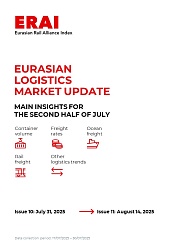According to Kazakhstan Railways, 40 per cent of the cargo that arrives in Xi’an International Port Area comes from Kazakhstan. And on its part, Xi’an accounts for 30 per cent of the total traffic on the New Silk Road. The logistics significance of Xi’an to Kazakhstan is obvious.
Strategic move
During the meeting, the development of transport routes and infrastructure in general was discussed. Kazakhstan is the first country of transit for trains on the way from China to Europe. Hence, Kazakhstan contributes greatly to the success of the China-Europe Express.
The country recently noted that the transit time across Kazakhstan has been halved compared to last year from 12 days to 6 days, and it wants to further reduce this to five days by the end of 2023.
The construction of its own terminal in Xi’an may help to further reduce transit times, as the railway company will be able to handle the journey up till the end destination. This may result in less paperwork and shorter waiting times in Xi’an.




